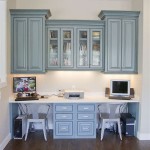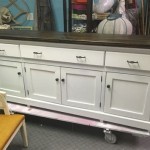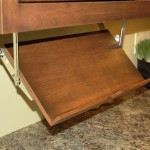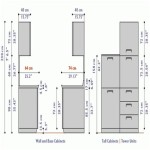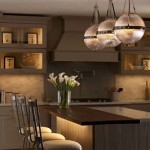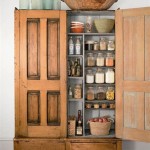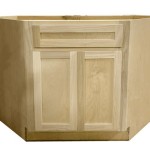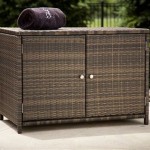What is a Soft Close Cabinet Hinge?
Soft close cabinet hinges have become a ubiquitous feature in modern kitchens and bathrooms. They represent a significant advancement over traditional hinges, offering a more refined and user-friendly experience. Understanding the mechanics and benefits of soft close hinges is crucial for anyone undertaking a kitchen or bathroom renovation, or simply seeking to upgrade existing cabinetry.
At its core, a soft close cabinet hinge is a specialized hinge designed to prevent cabinet doors from slamming shut. This is achieved through an integrated mechanism, typically hydraulic or pneumatic, that dampens the motion of the door as it approaches the closed position. The result is a smooth, quiet, and controlled closing action, eliminating the jarring noise and potential damage associated with traditional, unsprung hinges.
The basic principle of operation involves the hinge sensing the impending closure of the door. As the door nears the cabinet frame, the dampening mechanism engages. This mechanism slows the door's momentum, ensuring that it closes gently and silently. The specific design and complexity of the dampening system can vary depending on the manufacturer and the intended application.
Soft close hinges are generally constructed from durable materials like steel or stainless steel, ensuring longevity and resistance to corrosion. They are available in various styles and configurations to accommodate different cabinet designs and door overlays. This versatility makes them suitable for a wide range of applications, from frameless European-style cabinets to traditional face-frame cabinets.
Key Point 1: The Mechanics of Soft Close Hinges
The functionality of a soft close cabinet hinge hinges on its internal dampening mechanism. This mechanism is typically housed within the hinge body and is responsible for controlling the speed at which the door closes. While different designs exist, the two most common types of dampening mechanisms are hydraulic and pneumatic.
Hydraulic dampening systems utilize a small cylinder filled with a viscous fluid, such as oil. As the door closes, a piston within the cylinder is forced through the fluid. The resistance created by the fluid slows the piston's movement, and consequently, the door's closing speed. The viscosity of the fluid and the size of the piston determine the level of dampening provided. Hydraulic hinges are generally known for their smooth and consistent performance, and they are less susceptible to temperature variations.
Pneumatic dampening systems, on the other hand, use compressed air to achieve the same effect. A small air cylinder is incorporated into the hinge, and as the door closes, air is forced out of the cylinder through a small opening. The restriction of airflow creates resistance, slowing the door's movement. The size of the opening and the pressure within the cylinder determine the level of dampening. Pneumatic hinges tend to be slightly more sensitive to temperature changes than hydraulic hinges, but they are generally more affordable.
Regardless of the type of dampening mechanism used, the key is that the hinge detects when the door is nearing the closed position and engages the dampening process. This precise timing is crucial for ensuring a smooth and controlled closing action. Some soft close hinges even feature adjustable dampening settings, allowing users to fine-tune the closing speed to their preference.
The placement of the dampening mechanism can also vary. Some hinges have the dampening mechanism integrated directly into the hinge arm itself, while others have a separate damper that attaches to the cabinet frame. Both designs are effective, but the integrated design is often considered more aesthetically pleasing.
Key Point 2: Benefits of Using Soft Close Cabinet Hinges
The advantages of using soft close cabinet hinges extend beyond simply eliminating noise. They offer a range of practical and aesthetic benefits that contribute to a more enjoyable and durable kitchen or bathroom environment.
One of the most significant benefits is the reduction of noise. Slamming cabinet doors can be disruptive, especially in households with multiple occupants. Soft close hinges eliminate this noise pollution, creating a more peaceful and tranquil living space. This is particularly beneficial in open-plan living areas where the kitchen is directly connected to the living room or dining room.
Beyond noise reduction, soft close hinges also help to protect cabinet doors and frames from damage. The constant impact of slamming doors can weaken the joints and hinges over time, leading to premature wear and tear. By preventing slamming, soft close hinges significantly extend the lifespan of the cabinetry, saving homeowners money on repairs and replacements in the long run.
Another benefit is the increased safety they provide. Slamming cabinet doors can pose a risk to fingers, especially for young children. Soft close hinges eliminate this risk by preventing the door from closing forcefully. This is particularly important in households with small children who are prone to exploring and interacting with their surroundings.
Furthermore, soft close hinges contribute to a more luxurious and high-end feel in the kitchen or bathroom. The smooth and controlled closing action creates a sense of quality and sophistication. This small detail can significantly enhance the overall aesthetic appeal of the space, making it more enjoyable to use and more attractive to potential buyers.
Finally, soft close hinges can also help to prevent items stored inside the cabinets from shifting or falling over. The gentle closing action minimizes the jarring motion that can cause items to move, reducing the risk of breakage or spills. This is particularly beneficial for storing fragile items such as glassware or delicate dishes.
Key Point 3: Types and Installation Considerations
Soft close cabinet hinges are available in various types and configurations to suit different cabinet designs and installation requirements. Understanding the different types and installation considerations is crucial for selecting the right hinges for a specific project.
One of the primary distinctions between soft close hinges is the overlay type. Overlay refers to the amount that the cabinet door overlaps the cabinet frame. Common overlay types include full overlay, half overlay, and inset. Full overlay hinges are used when the door completely covers the cabinet frame, while half overlay hinges are used when the door only partially covers the frame. Inset hinges are used when the door sits flush with the cabinet frame. Choosing the correct overlay type is essential for ensuring a proper fit and function.
Another important consideration is the mounting style. Soft close hinges are available in face-frame and frameless (European-style) versions. Face-frame hinges are designed to attach to the face frame of the cabinet, while frameless hinges are designed to attach directly to the cabinet side panel. The choice of mounting style depends on the type of cabinet construction.
The installation of soft close hinges is generally straightforward, but it requires careful attention to detail. It is essential to use the correct screws and to position the hinges accurately. Incorrect installation can lead to misalignment, binding, or even damage to the cabinet. Many manufacturers provide detailed installation instructions with their hinges, and it is recommended to follow these instructions carefully.
When replacing existing hinges with soft close hinges, it is important to ensure that the new hinges are compatible with the existing screw holes. If the screw holes do not align, it may be necessary to drill new holes. It is also important to consider the weight and size of the cabinet door when selecting soft close hinges. Heavier doors may require stronger hinges or additional hinges to ensure proper support and dampening.
Furthermore, some soft close hinges offer adjustable features, such as side-to-side, up-and-down, and in-and-out adjustments. These adjustments allow for fine-tuning the alignment of the door and ensuring a smooth and consistent closing action. Taking advantage of these adjustments can significantly improve the performance and aesthetics of the installation.
Finally, it is always recommended to purchase soft close hinges from reputable manufacturers. High-quality hinges are more likely to provide reliable performance and durability over the long term. Reading reviews and comparing different brands can help to identify the best hinges for a specific budget and application.

Soft Close Vs Traditional Cabinet Hinges Which One Is Right For You E3 Group
:max_bytes(150000):strip_icc()/1021809-1-5fd9a53ee0c24bd38a9dc854d8b3d943.jpg?strip=all)
How Do I Retrofit Cabinets With Soft Close Hardware

Soft Close Blum Door Hinges What Does This Tiny On Do

Best Soft Close Hinge For Kitchen Cabinets Full Tutorial

Half Overlay Cabinet Hinge Soft Closing Door Furniture With S

Supply Soft Closing Stainless Steel Concealed Cabinet Hinge Whole Factory Guangdong Tutti Hardware Co Ltd

Hardwarecity 90 Degree Soft Closing Cabinet Hinges Pair

Jasmine 3d Adjustable Soft Close Hinge 2ppp

Cabinet Hinge Soft Closing Full Overlay Door Furniture With S

Everbilt 1 Pair Face Frame 35 Mm 110 Degree 3 4 In Overlay Soft Close Nickel Cabinet Hinge 2 Pieces H70300e Np Cp The Home Depot
Related Posts

